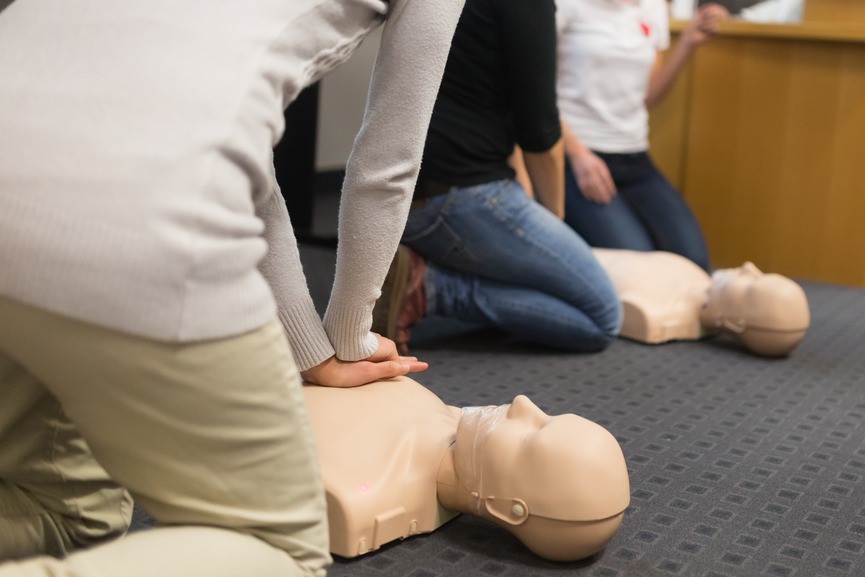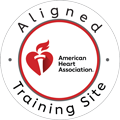Cardiac Arrest is a sudden and life-threatening condition where the heart ceases to pump blood effectively. In such dire moments, understanding the principles of cardiac arrest management can be the difference between life and death. In this comprehensive guide, we delve into the CAB approach, an acronym that stands for Compressions, Airway, and Breathing – a critical framework for managing cardiac arrest situations effectively.
Cardiac arrest is a state where the heart suddenly stops beating, leading to a lack of blood flow and oxygen to vital organs. It’s a dire medical emergency that demands immediate attention and intervention. Cardiac Arrest Management is a set of life-saving techniques designed to restart the heart and restore circulation.

The CAB Approach
The CAB approach is a systematic method used by healthcare professionals and first responders to ensure that the essential elements of cardiac arrest management are addressed promptly and efficiently. It emphasizes the importance of immediate chest compressions, maintaining an open airway, and providing rescue breaths.
Compressions
High-quality chest compressions are the cornerstone of cardiac arrest management. They help maintain blood circulation and oxygen delivery to vital organs, increasing the chances of survival. Here’s a step-by-step guide on performing proper chest compressions:
- Positioning: Place the victim on a firm surface, ideally on their back.
- Hand Placement: Position your hands, one on top of the other, at the center of the victim’s chest.
- Depth: Compress the chest at least 2 inches deep for adults and 1/3 the depth of the chest for pediatric victims (children and infants)
- Rate: Deliver compressions at a rate of 100-120 per minute.
- Full Recoil: Allow the chest to fully recoil between compressions to maximize blood flow
Airway
An open airway is crucial for effective Cardiac Arrest Management as it allows the victim to receive adequate oxygen during rescue efforts. Here are techniques for clearing obstructions and ensuring proper airflow:
- Head Tilt-Chin Lift: Gently tilt the victim’s head backward and lift the chin to open the airway.
- Jaw-Thrust Maneuver: If a spinal injury is suspected, use the jaw-thrust maneuver instead of head-tilt chin-lift.
- Airway Devices: In some cases, advanced airway devices like supraglottic airways or endotracheal tubes may be needed to secure the airway
Breathing
While compressions and an open airway are vital, rescue breaths complement these efforts by supplying oxygen to the victim’s lungs and bloodstream. Proper techniques for delivering rescue breaths include:
Call Us Now
Get the Best CPR Class in Indianapolis Today!
- Effective Seal: Ensure an airtight seal over the victim’s mouth and nose.
- Ventilation Rate: Deliver 2 rescue breaths after each set of compressions.
- Visible Chest Rise: Watch for visible chest rise with each breath to confirm effective ventilation.
Additional Techniques for Optimal Cardiac Arrest Management
Automated External Defibrillators (AEDs)
Automated External Defibrillators (AEDs) are portable devices that analyze the heart’s rhythm and deliver a shock if needed to restore normal heart function. Here’s what you need to know:
- Prompt Usage: AEDs should be used as soon as possible during a cardiac arrest.
- Follow the Prompts: Most AEDs provide clear voice instructions for ease of use.
- Safety: AEDs are designed to be safe for bystanders and will only deliver a shock when necessary.
Targeted Temperature Management
Targeted Temperature Management is a medical treatment where a patient’s body temperature is lowered to protect the brain and vital organs following a cardiac arrest. Key points include:
- Post-Resuscitation: Hypothermia treatment is typically initiated after the return of spontaneous circulation (ROSC) for victims who remain unresponsive.
- Neuroprotective Effects: Cooling protocols aim to minimize brain damage and improve neurological outcomes in survivors.
The Future of Cardiac Arrest Management
Telemedicine in Resuscitation – Telemedicine is changing the landscape of cardiac arrest management by providing real-time support and guidance during resuscitation efforts. This emerging trend allows healthcare professionals to remotely assist bystanders and first responders, enhancing survival rates.
AI and Data Analytics in Predictive Analysis – Artificial intelligence and data analytics are being harnessed to predict cardiac arrest events. By collecting and analyzing patient data, AI can identify individuals at risk of cardiac arrest, allowing for early intervention and potentially preventing life-threatening events.
In conclusion, understanding the CAB approach – Compressions, Airway, and Breathing – is paramount for effective Cardiac Arrest Management. These fundamental techniques are the bedrock of resuscitation efforts, offering victims a fighting chance at survival. Whether you’re a healthcare professional or a concerned bystander, mastering these skills can make a profound difference in critical moments.
As we look to the future, technological advancements such as telemedicine and AI promise to further improve resuscitation outcomes. However, it’s essential to remember that the basics of CPR and the CAB approach remain timeless and invaluable. In cardiac arrest management, knowledge and preparedness are the keys to saving lives.
Get Lifesaving CPR Training in Indianapolis
Cardiac emergencies can happen at any moment. Being CPR certified prepares you to act fast and potentially save a life. As an American Heart Association training center, CPR Indianapolis offers top-quality AHA certification courses to equip you with critical lifesaving skills.
Their experienced instructors make learning hands-on CPR skills stress-free and engaging. Whether you need CPR/AED or first aid training for work, school, or personal knowledge, CPR Indianapolis has a class that fits your schedule. Choose from blended online/in-person or fully in-person AHA courses.
As Indianapolis’ premier CPR training center, CPR Indianapolis offers flexible scheduling, small class sizes, and a relaxed educational environment. Get CPR certified on your schedule!


